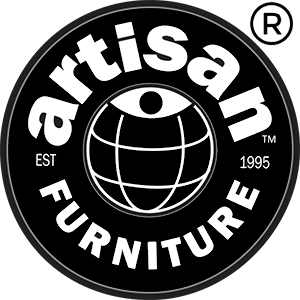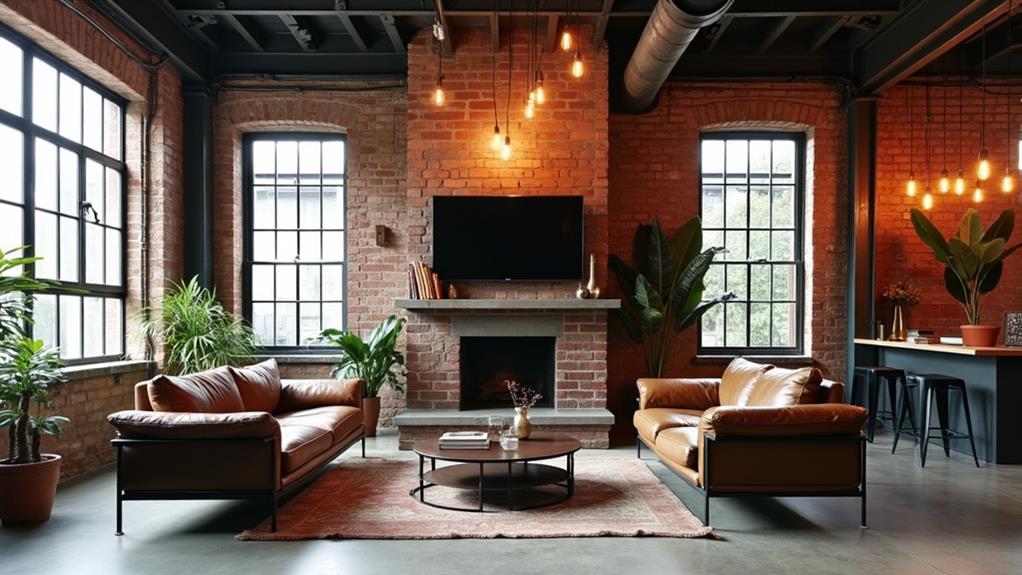Transform your space with industrial design secrets by selecting raw materials like exposed brick and reclaimed wood to enhance both warmth and authenticity. Incorporate metal accents such as steel or aluminum to add strength and a sleek, modern vibe. Repurposed items, like vintage furniture, not only offer sustainability but also imbue your space with character and history. Consider applying distressed finishes to introduce an aged aesthetic to key pieces. Expose hardware to highlight craftsmanship while creating open spaces to encourage flow and interaction. Balancing these design elements effectively results in a cohesive and inviting environment, which aligns with genuine industrial style principles. Explore further insights to achieve a harmonious blend.
Selecting Raw Materials
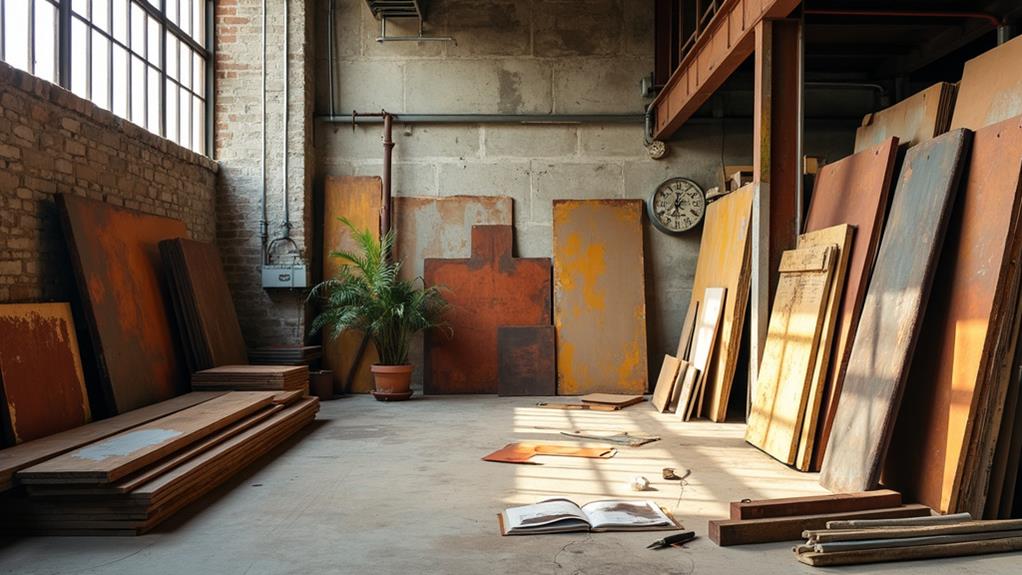
When you're selecting raw materials for industrial design, it's crucial to focus on authenticity and durability. Choose materials like exposed brick, which adds texture and warmth, or concrete, offering a modern touch.
Reclaimed wood presents rustic elegance and guarantees your design has a long-lasting aesthetic. Authenticity is key; genuine, aged materials provide not only visual appeal but also structural integrity.
Consider the unique characteristics of each material—brick's warmth, concrete's sleekness, and wood's natural charm. Prioritize the quality and origin of these materials to maintain the authenticity of your design.
Incorporating Metal Accents
After selecting the perfect raw materials, incorporating metal accents can further enhance the industrial design's aesthetic and functionality.
Metal accents, such as steel, iron, or aluminum, offer both strength and durability, while creating distinctive focal points within your space.
To effectively integrate metal into your design, consider the following:
- Furniture: Opt for metal-framed tables or chairs, which provide a sleek, modern look and support the industrial vibe.
- Lighting Fixtures: Choose metal pendant lights or exposed bulb fixtures to illuminate spaces and add an edgy feel.
- Architectural Elements: Incorporate metal beams or railings to emphasize structural integrity and visual interest.
Balancing metal with softer materials like wood or textiles guarantees warmth, preventing the space from feeling overly cold or sterile.
Using Repurposed Items
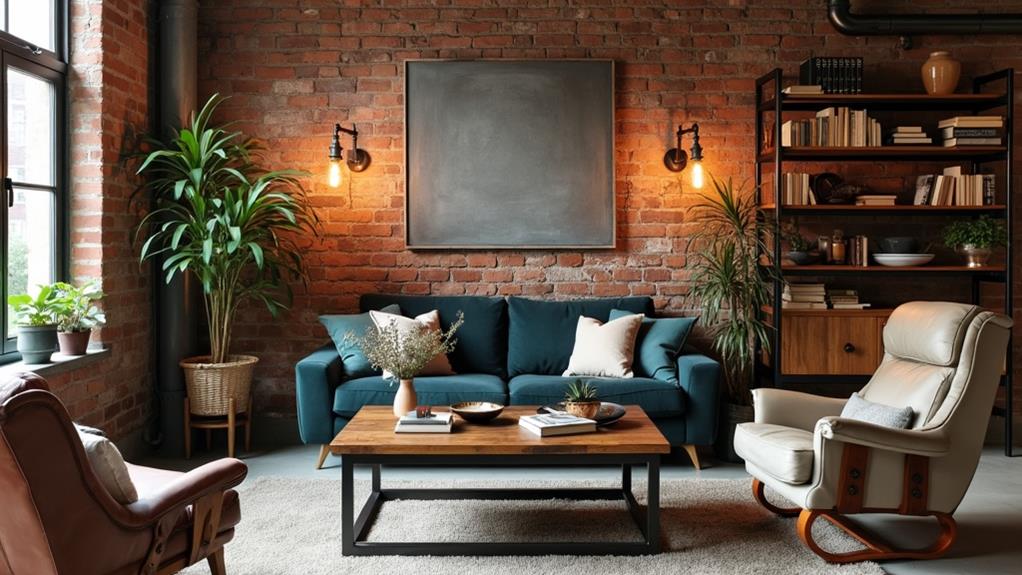
Repurposed items can transform any space by infusing it with history, character, and sustainability. By utilizing vintage furniture or architectural salvage, you add layers of depth and authenticity to your interior design.
These elements aren't just about aesthetic appeal; they also communicate a commitment to sustainability. Incorporating repurposed materials like reclaimed wood or metal can reduce waste and environmental impact, aligning with eco-friendly practices.
Each piece tells a story, whether it's a century-old door transformed into a dining table or industrial shelving from factory floors. Furthermore, these items often serve as conversation starters, injecting uniqueness into your space.
When selecting repurposed elements, guarantee they complement your existing design, harmonizing old with new for a cohesive look.
Applying Distressed Finishes
Distressed finishes offer a unique charm by embracing visible imperfections that tell a story.
You can transform your space by applying techniques that mimic natural weathering, adding character to wood and metal pieces.
Consider these steps:
1. Sanding and Scraping: Lightly sand surfaces, focusing on edges and corners, to achieve a worn look.
Scraping can add deeper grooves for more pronounced distressing.
2. Distressing Tools: Use chains, hammers, or wire brushes to create dents and scratches, enhancing the aged appearance of furniture or decor.
3. Balancing Elements: Limit distressed finishes to key pieces, allowing them to contrast against cleaner elements in your design, ensuring a harmonious look.
Enhancing With Exposed Hardware
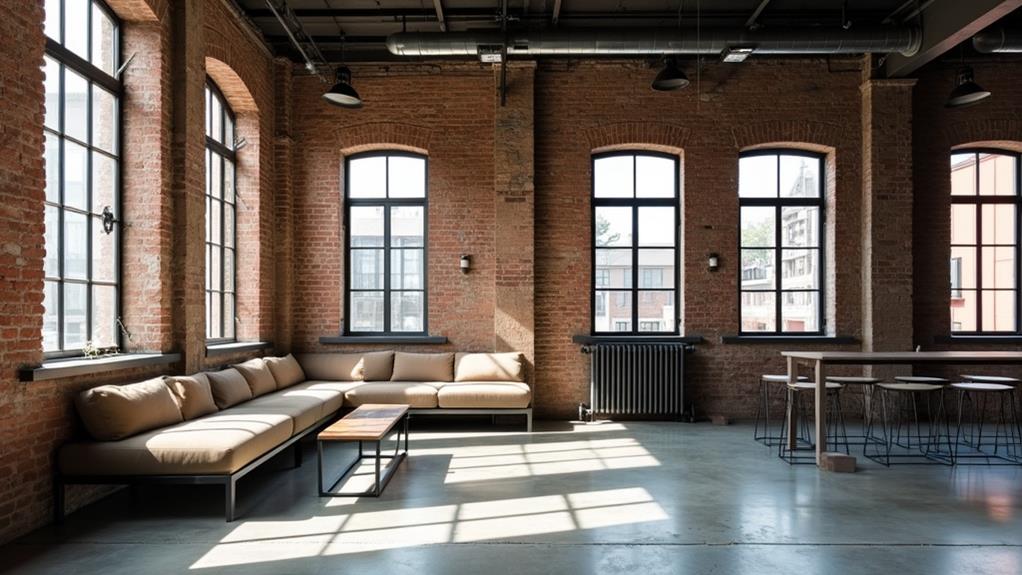
Building on the character-rich appeal of distressed finishes, exposed hardware offers another layer of authenticity and functionality to your design. By showcasing visible hinges, knobs, and metal pulls, you can enhance both the aesthetic and practical aspects of your space.
This approach not only highlights craftsmanship but also creates visual interest. When integrating exposed hardware, balance is vital; it should complement rather than dominate the overall design.
Consider using materials like brass, iron, or stainless steel to add texture and contrast. These elements can accentuate cabinetry, shelving, and lighting fixtures, making them focal points.
Thoughtful placement guarantees that hardware enhances the overall theme, aligning with the industrial style's emphasis on genuine, functional elements for a cohesive and inviting environment.
Creating Open Spaces
Open spaces are a hallmark of industrial design, offering an airy and expansive feel that transforms environments.
When you aim to create such spaces, consider how the following elements can enhance the layout and ambiance:
- Open Floor Plans: Removing unnecessary walls encourages flow and interaction, establishing a seamless shift between areas.
- Minimalistic Furniture: Choose furniture with clean lines and minimal ornamentation to maintain a lighter visual impact, ensuring the space feels unrestricted.
- Mirrors and Lighting: Use mirrors strategically to reflect light and create illusions of depth, while industrial lighting fixtures add character and functionality.
Balancing Design Elements
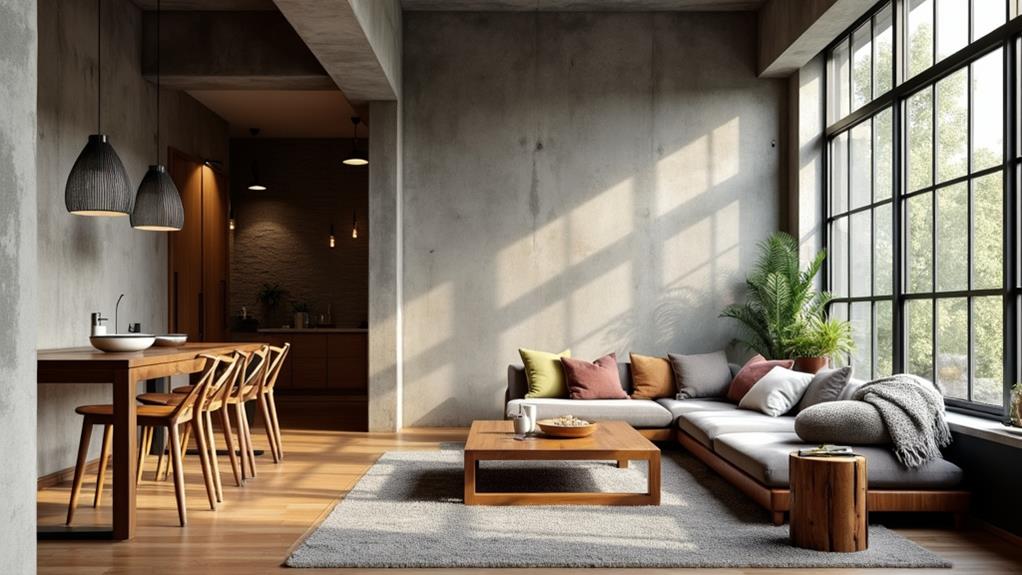
Achieving harmony in industrial design hinges on effectively balancing design elements. Start by blending masculine and feminine features; combine rugged materials like concrete with softer textiles to create warmth.
Dark, muted colors set a solid base, while vibrant hues inject personality. To maintain visual interest, mix clean-lined furniture with curvaceous elements. Balance is vital; combining metal with wood or leather guarantees spaces feel inviting rather than cold.
Incorporate a variety of textures through materials like exposed brick and reclaimed wood, adding depth and character. Utilize lighting to enhance ambiance, choosing fixtures that match the industrial aesthetic.
Pay attention to the proportion of elements, guaranteeing no single feature dominates, which maintains a cohesive and appealing design atmosphere.
